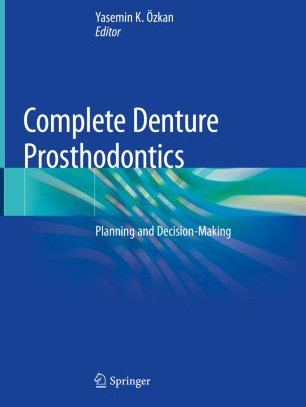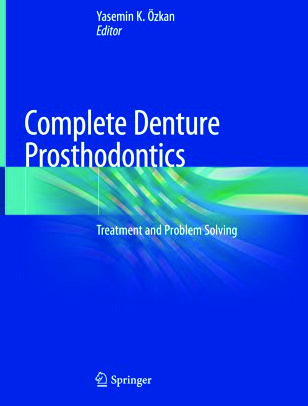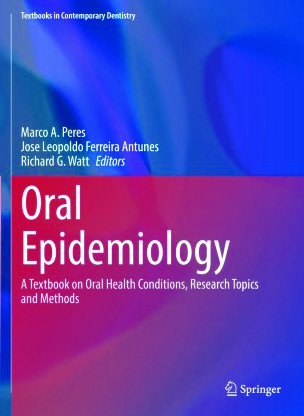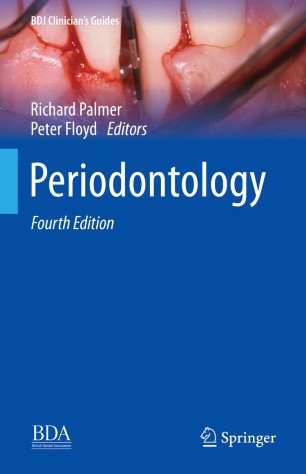STOMATOLOGY EDU JOURNAL 2021 Volume 8 Issue 4
CURRENT ISSUE
TABLE OF CONTENTS
EDITORIAL
A paradigm shift in increasing the occlusal vertical dimension: community dental health care
 Dear readers, Dear authors,
Dear readers, Dear authors,
The increase in the life expectancy of the population in high-income countries, members of the Organization for Economic Co-operation and Development (OECD) [1], has generated a number of challenges in dental practice, related to factors such as: complex medical and dental scenarios, financial limitations, patients’ resistance to treatment [2], dental wear [3].
At the same time, there is an increase in the prevalence of tooth wear in the adult population due to the loss of dental substance by acid attack. The paradigm shift emphasizes the minimally invasive dentistry objective by using adhesive dental restorative materials, following a biomimetic approach [4].
A better understanding of the importance of erosion in dental wear and the ability to create occlusal space for those teeth that require restoration with axial tooth movement (the Dahl concept) have revolutionized the conservative principle in restoring damaged and worn teeth with digital technology [5]. (read more)
Marian-Vladimir Constantinescu
DDS, MSc, PhD, Professor
Editor-in-Chief
ORIGINAL ARTICLES
- COMMUNITY DENTISTRY
Evaluation of the salivary parameters in facial mask wearers during Covid-19 pandemic
DOI: https://doi.org/10.25241/stomaeduj.2021.8(4).art.1
 The first cases of the novel coronavirus 2019 (COVID-19) appeared in Wuhan, China, in December 2019. The rapid spread of severe acute respiratory syndrome coronavirus 2 (SARS-CoV-2) forced the World Health Organization (WHO) on March 11, 2020 to announce a global pandemic situation [1], disrupting and creating difficulties for governments and national health systems in managing it [2]. Throughout this period, the scientific communities around the world have been looking for some methods to reduce the spread of the disease. The lack of effective treatments against the virus, as well as its rapid and uncontrollable evolution, forced the authorities to impose a series of non-pharmacological measures to limit the spread of the virus, such as maintaining hand hygiene, keeping social distance and wearing facial masks [1,2]. The existence of solid evidence that the SARS-CoV-2 virus would be transmitted by air has strengthened the belief that the use of face masks would be an effective way to reduce the spread of the virus [2,3,4]. (read more)
The first cases of the novel coronavirus 2019 (COVID-19) appeared in Wuhan, China, in December 2019. The rapid spread of severe acute respiratory syndrome coronavirus 2 (SARS-CoV-2) forced the World Health Organization (WHO) on March 11, 2020 to announce a global pandemic situation [1], disrupting and creating difficulties for governments and national health systems in managing it [2]. Throughout this period, the scientific communities around the world have been looking for some methods to reduce the spread of the disease. The lack of effective treatments against the virus, as well as its rapid and uncontrollable evolution, forced the authorities to impose a series of non-pharmacological measures to limit the spread of the virus, such as maintaining hand hygiene, keeping social distance and wearing facial masks [1,2]. The existence of solid evidence that the SARS-CoV-2 virus would be transmitted by air has strengthened the belief that the use of face masks would be an effective way to reduce the spread of the virus [2,3,4]. (read more)
Citation: Tărăboanță I, Stoleriu S, Iovan G, Ghiorghe AC, Nica I, Tărăboanță-Gamen AC, Andrian S. Evaluation of the salivary parameters in facial mask wearers during COVID-19 pandemic. Stoma Edu J. 2021;8(4):233-238
Authors:
Ionuț Tărăboanță: ORCIDiD| ResearchGate | Crossref | PubMed | Scopus
Simona Stoleriu: ORCIDiD | ResearchGate |Crossref | PubMed | GoogleScholar | Scopus
Gianina Iovan: ORCIDiD | ResearchGate | PubMed | Crossref | GoogleScholar | Scopus
Angela Cristina Ghiorghe: ORCIDiD | PubMed | GoogleScholar | Scopus
Irina Nica: ORCIDiD | ResearchGate | PubMed | GoogleScholar | Scopus
Andra Claudia Tărăboanță-Gamen: ORCIDiD | ResearchGate | PubMed | Scopus
Sorin Andrian: ORCIDiD | ResearchGate | PubMed | GoogleScholar | Scopus
- COMMUNITY DENTISTRY
Knowledge and attitudes towards Covid-19 vaccine among Indian dentists
DOI: https://doi.org/10.25241/stomaeduj.2020.8(4).art.2
 The coronavirus disease 2019 (COVID-19) became a pandemic, due to the severe acute respiratory syndrome virus 2 (SARS-CoV-2) that was declared a public health emergency by the World Health Organization in January 2020 [1]. This global pandemic lead to variable lockdown periods across the world, including India [2]. Dental professionals are likely to be at a higher risk of contracting COVID-19 particularly due to the frequent aerosol generating procedures in routine dental treatments [3,4]. Previous reports indicated that, in general, Indian dental professionals were inadequately prepared for the provision of patient care during COVID-19 pandemic, due to professional and/or medico-legal concerns [5,6].
The coronavirus disease 2019 (COVID-19) became a pandemic, due to the severe acute respiratory syndrome virus 2 (SARS-CoV-2) that was declared a public health emergency by the World Health Organization in January 2020 [1]. This global pandemic lead to variable lockdown periods across the world, including India [2]. Dental professionals are likely to be at a higher risk of contracting COVID-19 particularly due to the frequent aerosol generating procedures in routine dental treatments [3,4]. Previous reports indicated that, in general, Indian dental professionals were inadequately prepared for the provision of patient care during COVID-19 pandemic, due to professional and/or medico-legal concerns [5,6].
The COVID-19 vaccines developed within a short period of nine months since the pandemic began, a first in the annals of human history, which is a tribute to human ingenuity and technical prowess [7]. The consensus is that up to 70 to 80 per cent of the population should be successfully vaccinated to achieve herd immunity of a community to prevent further diseases spread [8]. (read more)
Citation: Kinariwala N, Udayamalee I, Samaranayake LP, Patel Z. Knowledge and attitudes towards COVID-19 vaccine among Indian dentists. Stoma Edu J. 2021;8(4): 241-245
Authors:
Niraj Kinariwala: ORCIDiD| ResearchGate |Crossref | PubMed | GoogleScholar | Scopus
Iresha Udayamalee: ORCIDiD | ResearchGate| PubMed | GoogleScholar | Scopus
Lakshman Perera Samaranayake: ORCIDiD| ResearchGate |Crossref | PubMed | Scopus
Zeal Patel: ORCIDiD | ORCIDiD | PubMed | GoogleScholar | Scopus
- ORTHODONTICS
Cephalometric parameters in cleft palate patients with and without oronasal fistula
DOI: https://doi.org/10.25241/stomaeduj.2021.8(4).art.3
 Failure in the fusion of medial nasal processes and maxillary prominences would result in the development of a cleft lip while failure in merging palatal shelves would result in the development of a cleft palate (CP) [1]. At present, patients with a cleft palate (CP) often undergo corrective surgery before 1 year of age. However, a fistula often remains in the palate after surgery that causes complications for patients.
Failure in the fusion of medial nasal processes and maxillary prominences would result in the development of a cleft lip while failure in merging palatal shelves would result in the development of a cleft palate (CP) [1]. At present, patients with a cleft palate (CP) often undergo corrective surgery before 1 year of age. However, a fistula often remains in the palate after surgery that causes complications for patients.
CP patients often experience restricted development of craniofacial structures. Controversy exists regar-ding the causes of growth limitation in these patients. Some researchers [2] have attributed it to the surgical repair while some other factors not related to the corrective surgery such as genetics (inherited trait), and adaptive changes due to the mechanical presence of the cleft. Growth limitations associated with CP may affect the growth pattern in all three planes of vertical, sagittal and transverse [3-5]. (read more)
Citation: Jamilian A, Nucci L, Narimani M, Farhadi M, Farahmand M, Kamali Z, Darnahal A. Cephalometric parameters in cleft palate patients with and without oronasal fistula. Stoma Edu J. 2021;8(4):247-252
Authors:
Abdolreza Jamilian: ORCIDiD| ResearchGate | PubMed | Google Scholar | Scopus
Ludovica Nucci: ORCIDiD| ResearchGate | PubMed | Google Scholar | Scopus
Mohammadamin Narimani: ORCIDiD| ResearchGate | PubMed | GoogleScholar
Maziyar Farhadi: ORCIDiD | ResearchGate | PubMed | GoogleScholar
Mona Farahmand: ORCIDiD| Google Scholar
Zinat Kamali: ORCIDiD | ResearchGate | PubMed | Google Scholar | Scopus
Alireza Darnahal: ORCIDiD| ResearchGate | PubMed | Google Scholar | Scopus
- ORTHODONTICS
DOI: https://doi.org/10.25241/stomaeduj.2021.8(4).art.4
 With the outbreak of coronavirus infection (COVID-19) in December of 2019, the pandemic spread though out the world, wreaking havoc on personal life, employment, and health care. Coronaviruses are a large family of viruses that usually cause mild to moderate upper-respiratory tract illness [1,2,3].
With the outbreak of coronavirus infection (COVID-19) in December of 2019, the pandemic spread though out the world, wreaking havoc on personal life, employment, and health care. Coronaviruses are a large family of viruses that usually cause mild to moderate upper-respiratory tract illness [1,2,3].
Seven different types have been found in humans, including Severe Acute Respiratory Syndrome (SARS), Middle East Respiratory Syndrome (MERS), and COVID-19 epidemics. COVID-19 transmits via inhalation by person-to-person and aerosol/droplet, as well as fomite and hand contamination [1]. Most people who get covid have mild symptoms like fever, dry cough, shortness of breath, anosmia, and ageusia, while a small percentage of affected COVID-19 cases expressed severe complications such as acute respiratory distress syndrome or even death [2,3]. Thus, COVID-19 might trigger pneumonia (ranged from mild to severe), cardiovascular diseases, gastrointestinal manifestations, hematological complications, as well as a broad spectrum for neurological features [2,3]. (read more)
Citation: Karvelas N, Karkazi F, Papadopoulos MA, Zetu IN, Özdemir F. The impact of COVID-19 on orthodontic postgraduate programs in Balkan countries: results from an international survey from orthodontic residents. Stoma Edu J. 2021;8(4):253-258
Authors:
Nikolaos Karvelas: ORCIDiD | ResearchGate | PubMed | Google Scholar | Scopus
Frantzeska Karkazi: ORCIDiD | ResearchGate | PubMed | Scopus
Moschos A. Papadopoulos: ORCIDiD | ResearchGate | PubMed | Google Scholar | Scopus
Irina Nicoleta Zetu: ORCIDiD | ResearchGate | PubMed | Scopus
Fulya Özdemir: ORCIDiD | ResearchGate | PubMed | Google Scholar | Scopus
REVIEW ARTICLE
- PROSTHETIC DENTISTRY
Conventional vs Simplified Complete Dentures
DOI: https://doi.org/10.25241/stomaeduj.2021.8(4).art.5
 Edentulism is the state of having lost all of the natural teeth and increases following the ageing of the population. According to the systematic review and meta-analysis of Roberto et al. [1], the prevalence of edentulism increases with age and in the elderly people this is influenced by demographic and socioeconomic factors. All this indicate the multifactorial etiology of edentulism [1]. Implant therapy is well documented and can provide a long term and efficient treatment for tooth loss. However, it is not always possible to proceed with implant rehabilitation for the edentulous patients due to medication, risks, cost and time. Complete dentures provide a solid rehabilitation for edentulism. They reconstruct all the missing hard and soft tissues. The standard protocol for fabricating a complete denture requires six clinical sessions followed by five laboratory stages. The clinical sessions include preliminary and final impression, maxillomandibular records, try-in of the dentures with the anterior teeth, try-in with all the teeth, and finally delivery of the complete denture. The preliminary impression is made with alginate on a stock tray or with compound on a metal tray. The purpose of this impression is to create a cast which will be used to fabricate a custom tray. This custom tray combined with a variety of materials will reassure the most detailed impression. This clinical session (final impression) is of the highest importance, as the stability of a complete denture relies on the supporting tissues. (read more)
Edentulism is the state of having lost all of the natural teeth and increases following the ageing of the population. According to the systematic review and meta-analysis of Roberto et al. [1], the prevalence of edentulism increases with age and in the elderly people this is influenced by demographic and socioeconomic factors. All this indicate the multifactorial etiology of edentulism [1]. Implant therapy is well documented and can provide a long term and efficient treatment for tooth loss. However, it is not always possible to proceed with implant rehabilitation for the edentulous patients due to medication, risks, cost and time. Complete dentures provide a solid rehabilitation for edentulism. They reconstruct all the missing hard and soft tissues. The standard protocol for fabricating a complete denture requires six clinical sessions followed by five laboratory stages. The clinical sessions include preliminary and final impression, maxillomandibular records, try-in of the dentures with the anterior teeth, try-in with all the teeth, and finally delivery of the complete denture. The preliminary impression is made with alginate on a stock tray or with compound on a metal tray. The purpose of this impression is to create a cast which will be used to fabricate a custom tray. This custom tray combined with a variety of materials will reassure the most detailed impression. This clinical session (final impression) is of the highest importance, as the stability of a complete denture relies on the supporting tissues. (read more)
Citation: Pani E, Sarafianou A, Chalazoniti A, Artopoulou II, Polyzois G. Conventional vs simplified complete dentures: a systematic review. Stoma Edu J. 2021;8(4):261-274
Authors:
Eleftheria Pani: ORCIDiD | ResearchGate
Aspasia Sarafianou: ORCIDiD | ResearchGate | PubMed | Google Scholar
Aspasia Chalazoniti: ORCIDiD
Ioli Ioanna Artopoulou: ORCIDiD | PubMed | Google Scholar
Gregory Polyzois: ORCIDiD |ResearchGate | PubMed |
PRODUCT NEWS
One post for any canal morphology – Splendor-SAP from Angelus, Brazil
Root canal posts were recommended for anchorage of the core build-up and final coronal restoration. Among the different types of posts available, glass fiber reinforced posts (FRP) have been chosen for use as a post material for aesthetic and reliable restorations in current practice with high success rates.
Recently, the Brazilian company Angelus developed the fiberglass endodontic system called Splendor-SAP, recommended to be used for any root canal morphology.
The recommendation to use Splendor-SAP posts to anchor core build-up and final coronal restoration is based on the following 5 advantages:
– Universal – unique size for narrow, medium and wide canals
– Adjustable depending on the shape of the canal both in diameter and tapering
– Improved retention – mechanical locking in addition to chemical bonding
– Minimally invasive preparation – no need for excessive wearing of the dental structure
– Low risk of root fracture – the elasticity is similar to that of dentin.
The post and the sleeve are made of a composition of 80% fiberglass and 20% epoxy resin.
Unique adaptable post design
• Original because it is parallel and has an adjustable conical sleeve that slides vertically. The system is designed with a special drill corresponding to post design.
• The sleeve slides when the post is inserted, transforming a sharp, parallel post into a custom post. The special shape of the sleeve adapts the oval anatomy of the root canals, increasing the contact between the post and canal walls.
Adaptable single post benefits
• A unique system that can be used in different morphologies of the canal.
• Adjustable – the system promotes excellent canal adaptation.
• The design of the posts allows the mechanical retention of the sleeve.
• Positioning the sleeve together with the post facilitates the filling of the canal, increasing the retention and reducing the risk of movement.
• The sleeve promotes a higher amount of fiber in the cervical region, allowing a smaller volume of cement and ensuring greater strength and retention. (read more)
Florin-Eugen Constantinescu
DOI: https://doi.org/10.25241/stomaeduj.2021.8(4).prodnews.1
BOOKS REVIEW
Editors: Ching-Chang Ko, Dinggang Shen, Li Wang
DOI: https://doi.org/10.25241/stomaeduj.2021.8(4).bookreview.2
Oral Epidemiology
A Textbook on Oral Health Conditions, Research Topics and Methods
Editors: Marco A. Peres, Jose Leopoldo Ferreira Antunes, Richard G. Watt
DOI: https://doi.org/10.25241/stomaeduj.2021.8(4).bookreview.4
Editors: Richard Palmer, Peter Floyd
DOI: https://doi.org/10.25241/stomaeduj.2021.8(4).bookreview.5







